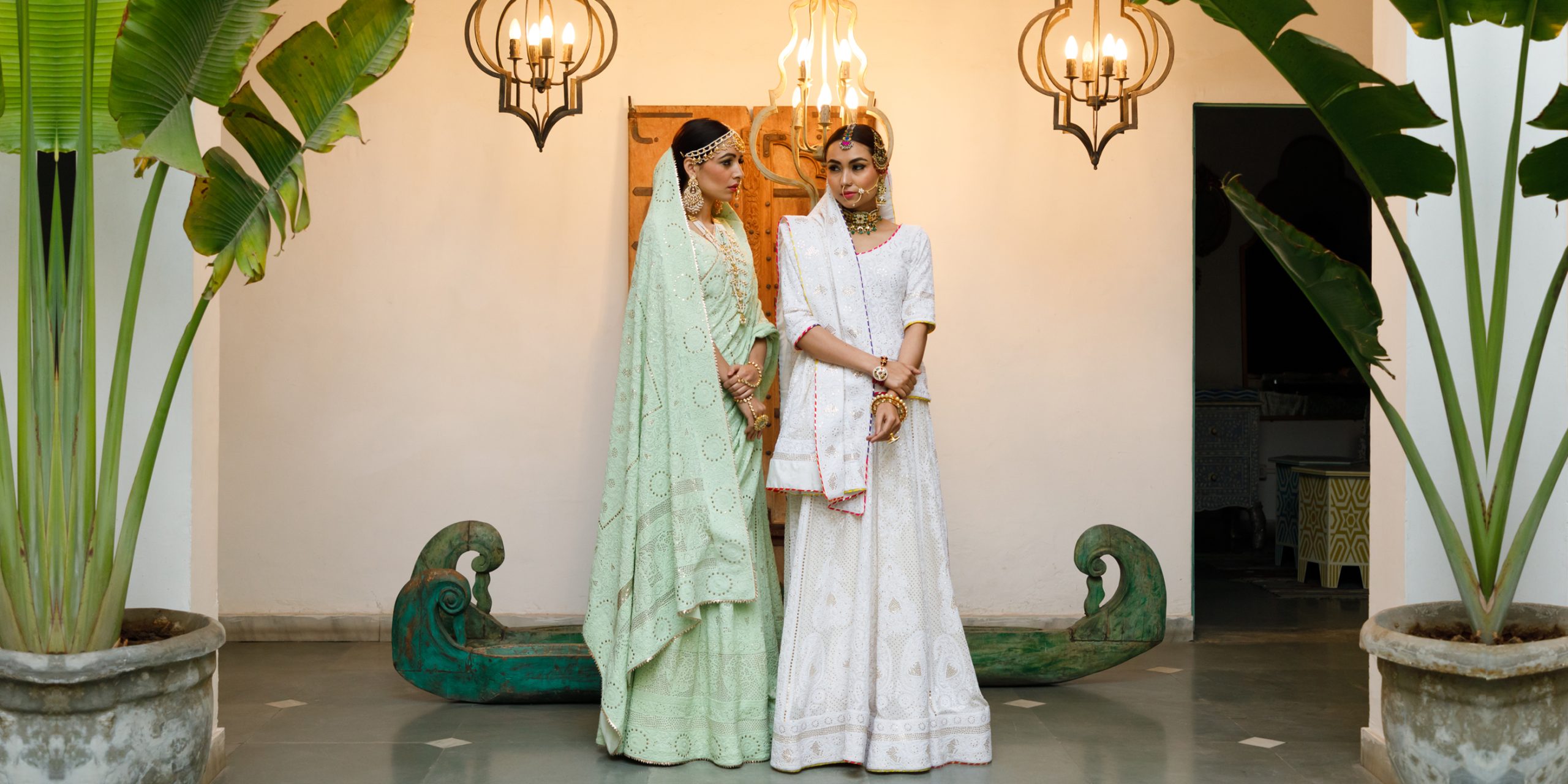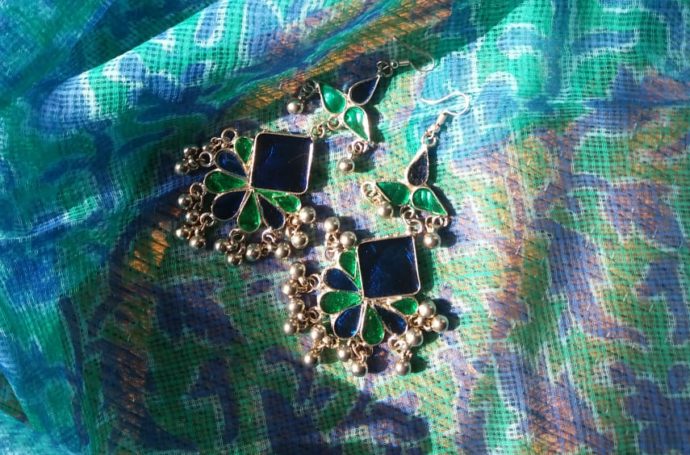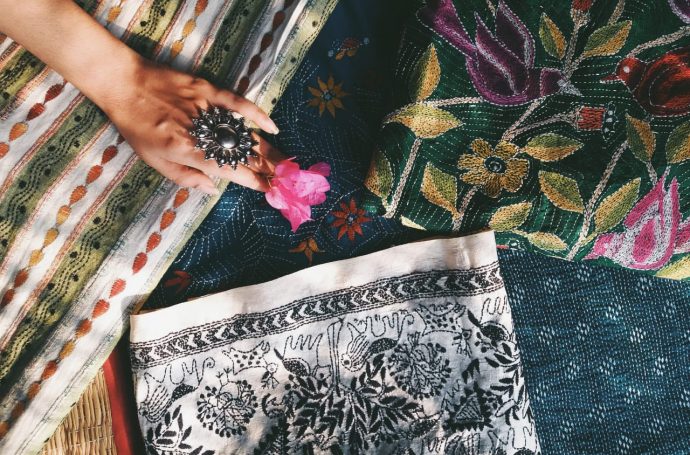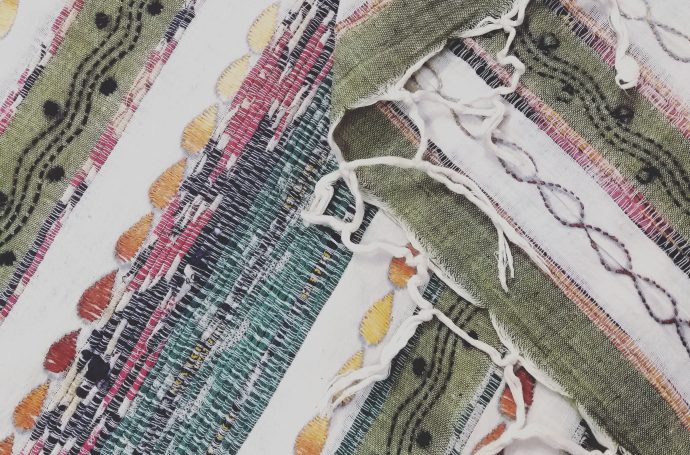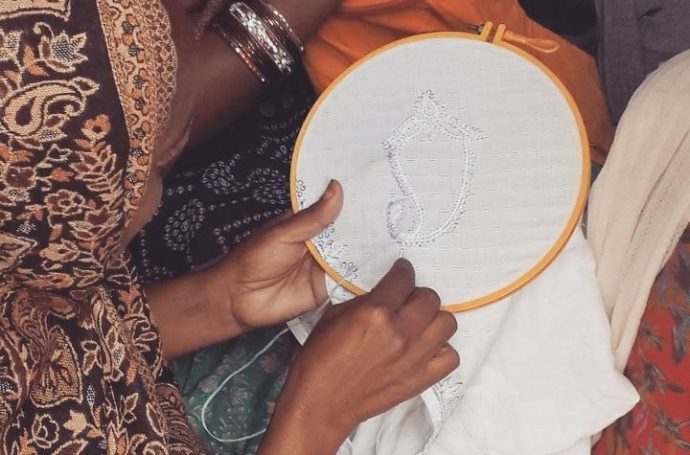Kota Masuria, Kota Doria – Women & Woven Air
Kaithoon, a village of about 15,000 people in Rajasthan, is home to the ethereal kota doria weave. With 2500 looms, it houses weavers who have been working here for 300 years – their forefathers were brought here from Mysore in the 17th century by Maharao Kishore Singh, a general in the Mughal Army. This textile is locally known as Kota Masuria, because of it’s roots in Mysore. A true blue Kota Doria combines cotton and silk yarns in a … Read Full
Kantha – Embroidery from the cradle to the grave!
We’ve all encountered a kantha – be it saree, dupatta, suit, cushion or blanket. But a little known fact that differentiate’s this eastern Indian tradition from several other embroidery crafts is that there lies a profound functionality behind it, for it was in it’s truest essence a craft tradition of the poor. Discarded textile scraps sewn together with a running stitch – the basic foundational block of needlework – to create something new. One of India’s oldest embroidery traditions, the … Read Full
Deconstruction, Reconstruction: The Tale of Khesh Sarees
We’ve all heard of recycling and upcycling, recreating new garments with the old. Following the same principle, there exists an eclectic, beautiful textured handloom textile that is literally a saree recreated by scraps of older sarees! The process is fascinating yet simple…
The warp is with new yarn and the weft is with strips of thin cloth obtained by tearing old sarees length wise. For non textile experts, this simply means that long, thin strips of cloth cut from old … Read Full
6/100 – Mystical Ajrak in Gajji Silk
for the #desidrapesrainbow, this divine gajji silk could be equal parts madder burgundy as it is indigo as it is black but I still dream of ajrak whenever I think neel, indigo, the night sky, the stars, the universe.
A divine ajrak on gajji silk from @fabindianews, this textile indigenous to Kutch is a match made in heaven with the tediously, intensively, magically surreal … Read Full
4/100 A Bohemian MulMul Rainforest
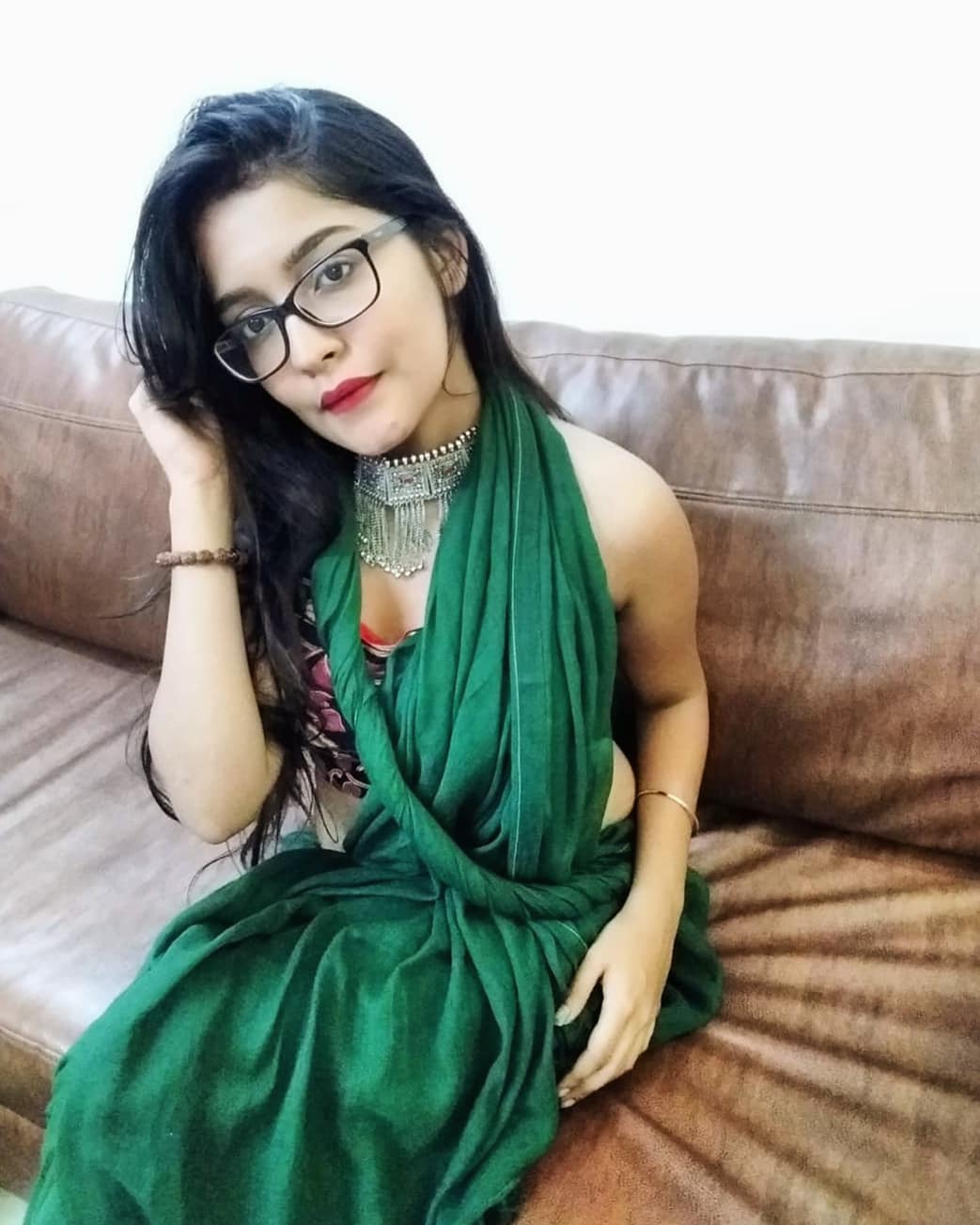
A drape for the #cocktailrani series, and celebrates how the saree, as a drape and an ensemble, is having quite the fashionable moment on social media, with gorgeously inspiring ladies around the planet posting their stylish takes on how versatile and chic it can be.
Ever since I discovered Suta, I’m 100% convinced that nothing embodies and envelopes sensuality like handloom mulmul does (georgette? what georgette). The buttery, breathable softness this textile offers can NEVER compare to any … Read Full
2/100 – Traditional Chikankari Saree, Stitches & More
A drape from my mother’s closet, this delicate white on black features lucknowi chikankari work – how beautiful a process to imagine, that these delicate motifs were worked on at the back of the sheer georgette to reveal the design on the front face of the fabric with absolute finesse. Here’s a closer look at the detail and stitches used;
I’m going to be talking about two traditional chikan work stitch styles seen in this saree, so here goes…
- Jali

